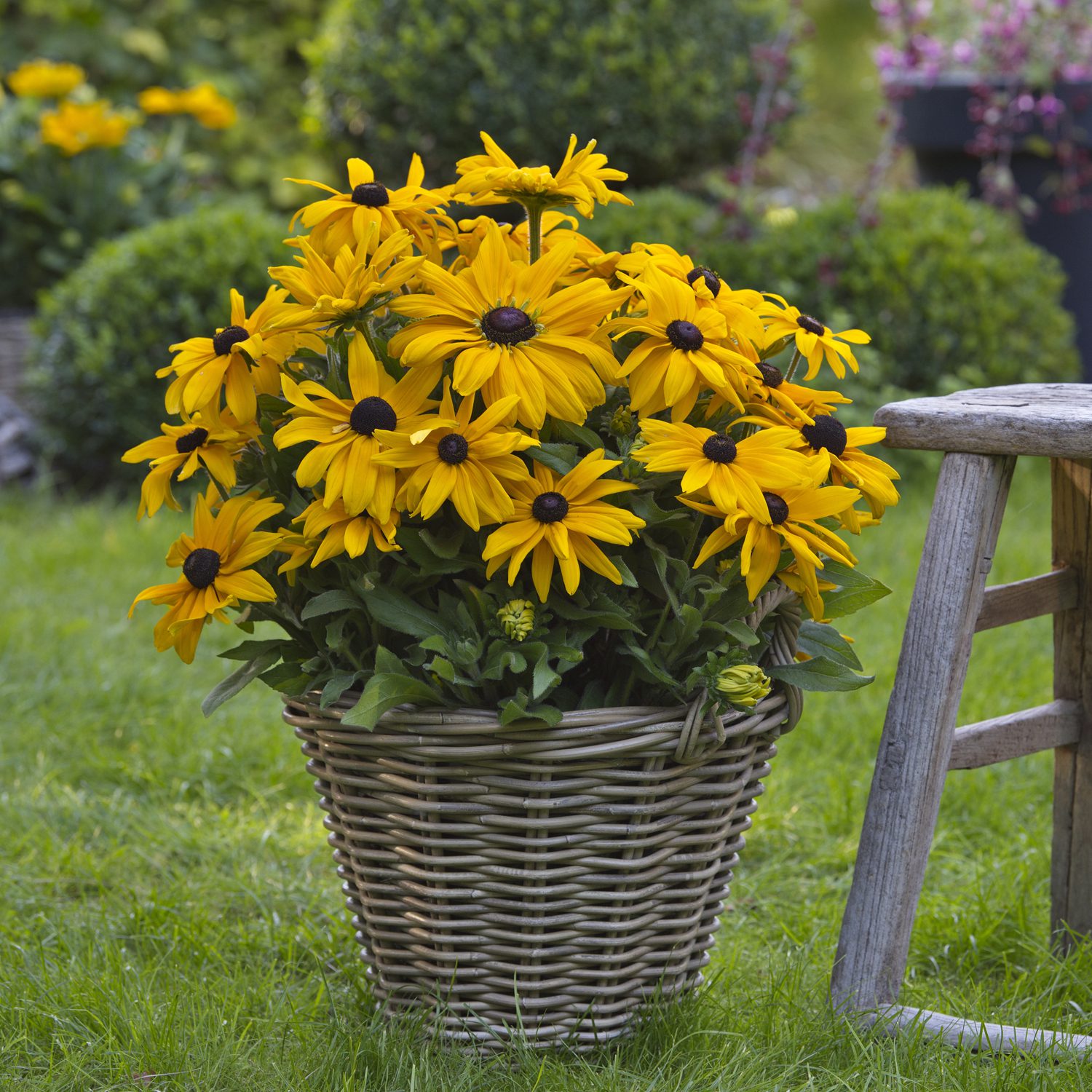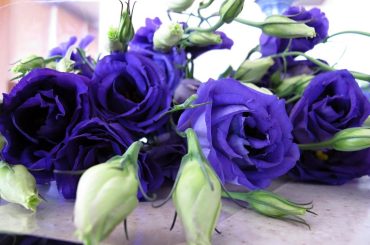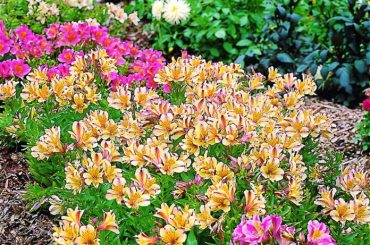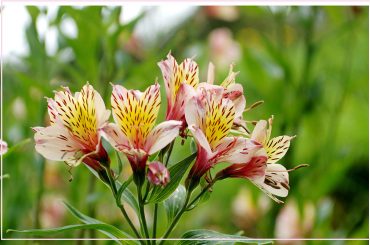Table of Contents
There are some particularly lovely plants that are perfectly appropriate to provide life and colour to your home, regardless of whether you have recently developed an interest in plants and want to light up your living space or need to change the furnishings for the upcoming season.
Rudbeckia Black-Eyed Susan is one such beautiful and versatile plant that has a variety of uses in landscaping and horticulture. Black-Eyed Susan is a perennial plant with numerous blossoms that is native to the Midwest. It has long been essential in perennial gardens due to its suitability for mass plantings. Both annual and perennial variants of Black-Eyed Susan are available. A member of the aster family, Asteraceae, it continues to bloom without much effort.
Black-eyed Susans’ “black eye” is the dark brown centre of their daisy-like flower head. With little maintenance, the cheerful flowers in lemon-yellow, orange, and gold bloom for weeks. Typically, their deep green leaves blend in well with other plants in a mixed garden bed.
Common Traits of Rudbeckia
- Genus Name: Rudbeckia
- Common Name: Black-Eyed Susan
- Exposure: Full Sun
- Drought Tolerance: High
- Zones: The range varies per species but is often between 3 and 9.
- Duration: Annual, Perennial, Biennial
- Habit: Herb
- Height: Depending on the cultivar, it ranges widely from 10 inches to 7 feet.
- Traits Of Flowers: Flowers can be single, semi-double, or fully double and range in size from 2 to 9 inches broad. Bright yellow to orange-gold are the common hues for the petals, and some varieties also have crimson, bronze, or mahogany flushes.
- Bloom Time: Even without deadheading, Black-Eyed Susan(Rudbeckia) plants have a lengthy bloom time that normally lasts from late July until the first frost. Some cultivars, like “Early Bird Gold,” have prolonged bloom periods and start flowering in the middle to end of April.
- Common Varieties: There are roughly 25 species of Rudbeckia, all of which are indigenous to North America. Although many species are technically biennials or short-lived perennials, they frequently come back from seeds distributed the previous autumn because they self-sow easily. The species with the widest variety for gardeners are Rudbeckia hirta (common black-eyed Susan).
These plants thrive in a wide range of natural growth environments, including fields and woodlands. Discover how to grow this local, daisy-like wildflower and how to save its seeds for future planting!
When to Plant Black-Eyed Susan
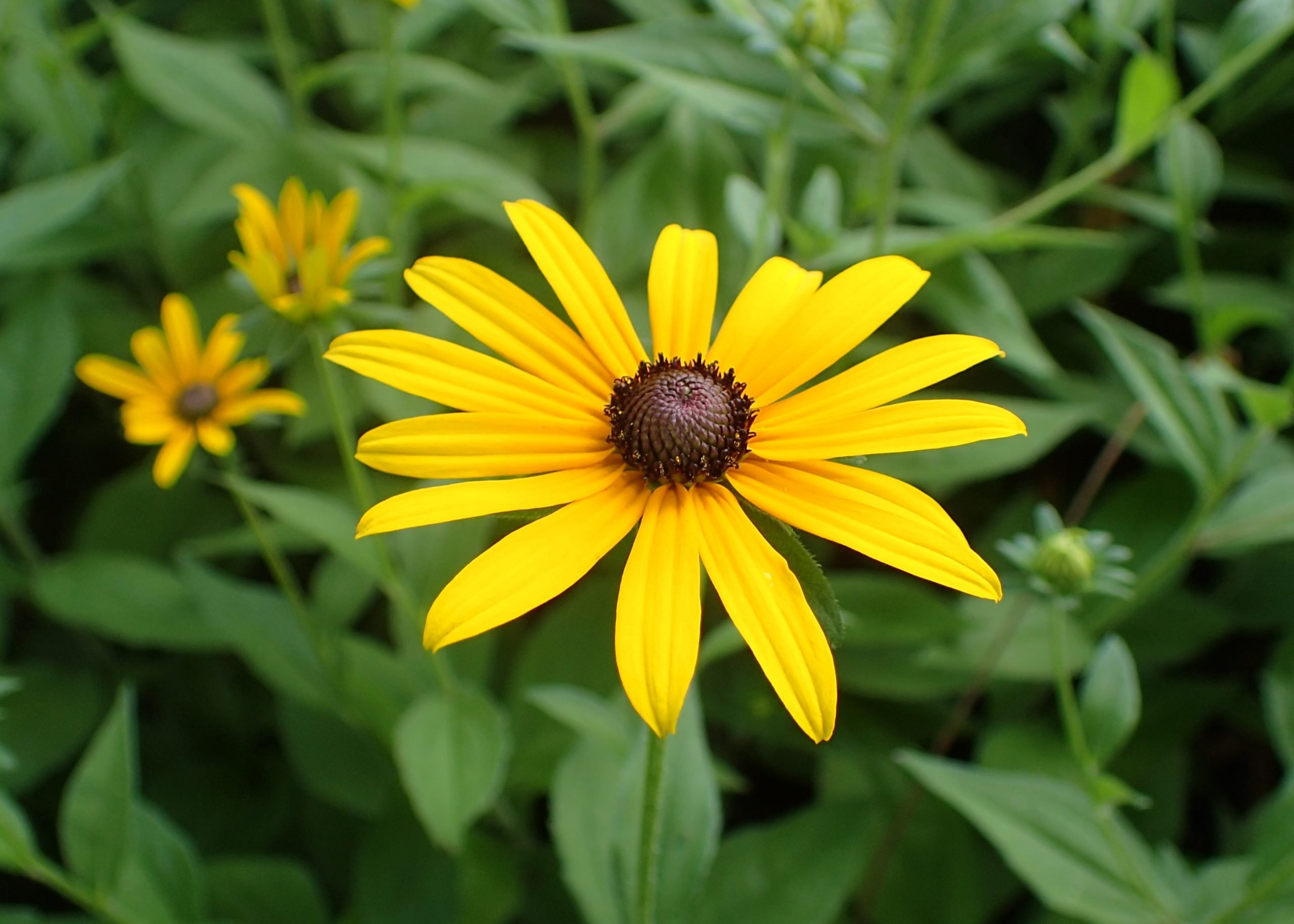
Although black-eyed Susans(Rudbeckia) are frequently bought as bedding plants in the spring, you can grow them from seed and have access to a significantly broader selection of varieties. Don’t plant during the summer heat. 70° to 75° F is the ideal soil temperature for germination.
The seeds can be sown directly in the garden in spring or summer, or you can start them indoors in early spring, about 10 weeks before the latest date for frost in your region. After seeding, the seed containers for perennial cultivars will germinate more effectively if they are maintained in the refrigerator or another cool environment for four weeks.
Plant fresh plants in the autumn or set them out in the spring after all dangers have passed. Even though it may take two to three years to reach its maximum height, it will flower in the first summer.
Where to Plant Black-Eyed Susan
Black-eyed Susans can be grown from seed, but they are typically started as nursery transplants. The stratification process is necessary for the seeds to break dormancy and begin to grow. You may either sow them outside in the fall or keep them indoors in a refrigerator to accomplish this.
Rudbeckia may grow in nearly any sunny area with soil that drains properly. Black-eyed Susan plants grow well on loam, clay, and sandy soils, as well as any other soil that isn’t consistently waterlogged. They can handle dryness better than they can handle wet ground. If you live in a hot, humid area, locate your plants in the garden, where they will have plenty of airflow to prevent the growth of powdery mildew. These plants make excellent selections for mass plantings, pots, beds, borders, and butterfly gardens.
How to Plant Black-Eyed Susan(Rudbeckia)
When Planting Outside
Plant spacing should be 18 inches. Loosen the soil and pull out weeds. Create a hole that is a few inches wider than the plant; seeds can be scattered and then gently pressed into the soil or covered with a thin layer of soil and then water thoroughly.
Black-eyed Susans can spread between 12 and 18 inches, so sow seeds closer together to limit excessive spreading or farther apart to create a lovely border and stop illness from spreading. Water the soil deeply to maintain moisture until your plants are flourished. They will be able to withstand dry circumstances once they have established strong roots.
When Planting Them Indoors
When starting plants indoors from seed, scatter the seeds over the standard seed starting mix. Do not cover the seed, as they need light to germinate. Apply the planting depth, growing medium, and watering requirements specified on the seed packet when sowing seeds inside.
When the seedlings first appear, give them lots of light by setting them on a sunny windowsill or under fluorescent plant lights. Keep your seedlings in a cold frame or another protected area for a week to adjust them to outdoor conditions before you plant them. Plant your seedlings outdoors after any danger of frost has passed.
Factors Affecting Growth of Rudbeckia ‘Black Eyed Susan’
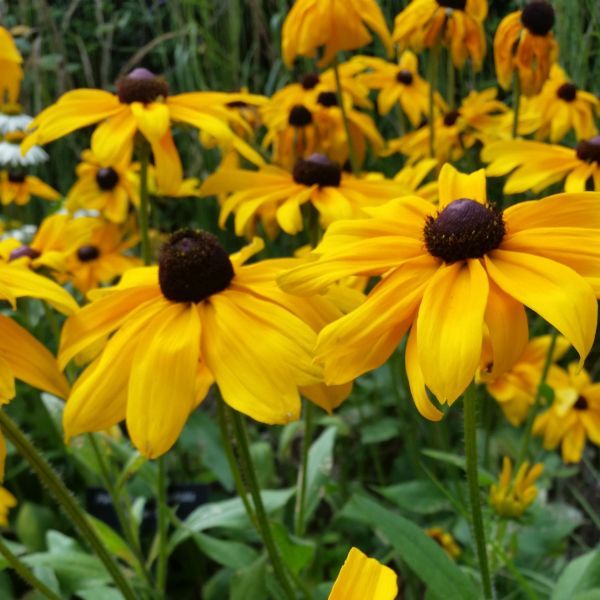
Soil Moisture: Dry, Moist
Soil pH: Acidic (pH<6.8)
Water Use: Medium
Light Requirement: Sun or artificial lights
Temperature: 60º Fahrenheit
Fertilizers: Doesn’t require (grows in most soil)
Lack of sunlight might result in failure to bloom. Black-eyes Susans require direct sunlight to blossom. Moving your plants to a new location is one approach to fix that. It’s possible that some perennial cultivars won’t blossom until their second year.
Too much nitrogen also prevents black-eyed Susans(Rudbeckia) from blooming. Choose a fertilizer that is high in bloom-promoting phosphorous if you must use one. Also, the Black-Eyed Susan is not the ideal plant for a container.
Be Careful! Rudbeckia (Black-eyed Susan) can encroach on surrounding blooms since it spreads by underground rhizomes and self-seeding (usually after the first year).
- Package Qty: 1 watering bottle(500ml), 1 cleaning brush, 1 curved tip tweezers, 1 straight tip...
- Foldable Gardening Mat: Installation szie: 18x18 inches. Made of waterproof and 4 snaps on the four...
- Durable Material: Hysagtek succulent plants tools are made of sturdy plastic and stainless steel,...
Growing Tips for Rudbeckia ‘Black Eyed Susan’

- Growing Rudbeckia (black-eyed Susans) is not very complicated. Remember the following tips to ensure beautiful and healthy blossoms.
- Black-eyed Susans can reproduce after the first season in order to maximize self-seeding and extend blooming, and remove dead flowers using clippers.
- To lower the chance of infection, get rid of dead plant material in the spring.
- The most frequent issue with black-eyed Susan is leaf spots, which are typically brought on by fungus. Cleaning up dead material in the spring before new foliage has appeared and in the autumn after the first frost are the best ways to deal with this issue.
- Regularly check plants to figure out if they need watering; don’t let them get too dry, but also don’t let the leaves get too wet since this can promote disease.
- Pruning back black-eyed Susan(Rudbeckia) after flowering may result in a second, smaller bloom in late fall.
- To prevent underground spread, dig up rhizomes, and remove the entire piece of root. Even the smallest fragments can grow into new plants thanks to rhizomes.
- To attract birds, leave some dried seed heads on the plants in the autumn.
Conclusion
Are you looking for a gorgeous plant that is virtually unbreakable? These are what you want!
When it comes to easy growing and strong bloom power, they are just impossible to top. Black-eyed Susans can make a wonderful addition to a pollinator garden. It comes as no surprise that Rudbekia is so often used in gardens, on patios, and on balconies.
It should be noted that species might be perennial, biennial, or annual. In bright sunlight, the black-eyed Susan(Rudbeckia) flourishes. This plant can withstand adverse situations, yet it thrives in fertile (not poor) soil.
If you’ve chosen to cultivate Black-Eyed Susans in your yard, you should know that these flowers are renowned for their vibrant colour, ability to reseed, and ease of maintenance.
Is this your first time planting Rudbeckia (Black-eyed Susans)? Let us know in the comments!
Frequently Asked Questions (FAQs)
Why Isn’t My Black-Eyed Susan(Rudbeckia) Blooming?
Lack of sunlight might result in failure to bloom. Black-eyes Susans require direct sunlight to blossom. Moving your plants to a new location is one approach to fix that. You can also try using Phosphorous rich fertilizers.
How Can I Determine Whether My Rudbeckia Is Perennial or Annual?
The Rudbeckia genus contains perennial, biennial, and annual varieties. Annual flowering plants wither away in extremely hot weather or during a winter frost. That is, they can be planted for only one season. Biennials fall somewhere in between annuals and perennials. Typically, they have two growing seasons in their life cycle. While perennials grow back year after year for more than two years.
How to Collect Seeds of a Black-Eyed Susan
Cut some stems once the seed heads have dried and turned brown. Remove the seedheads from the stems by popping them off, then place them in a small jar. After sealing the jar, shake it to dislodge the seedheads. Use your fingers to break apart the seed heads in the sieve. The seeds will fall through the sieve and onto the paper as they come off. Place those seeds into a paper envelope and seal and label it. Keep it dry and cool.
What Are Some Benefits of Rudbeckia?
This plant has numerous benefits. It is a beautiful ornamental plant that will bring colours to your garden. This plant has medicinal benefits and acts as an external wash for sores, snakebites, and swelling. These Black-eyed Susans are known for attracting birds, bees, and butterflies, making them one of the best plants for pollination.

